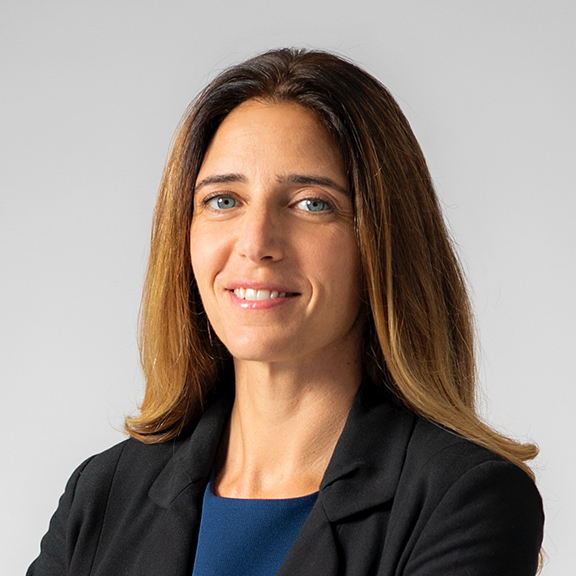The global climate is an enormously complex system, and as climate change intensifies, damaging climate events are cascading from one another. Here’s an example: shrinking Arctic sea ice drives changes in temperature circulation in the Atlantic Ocean, which leads to more frequent droughts in the Amazon rainforest. The interactions are sprawling and global in scope.
They also pose a challenge for investors in translating climate change into risks and opportunities for individual issuers and advocating for improved management, strategy and governance. Getting a better handle on climate science can sharpen these tools. It might mean better tracing of transitional and physical climate risks to income statements and balance sheets. Or it might mean more acumen in interpreting the results from climate change scenario analysis models.
The intersection of climate science and investing can help investors answer broader questions, too. That’s the objective of a series of joint research initiatives between AB investment teams and climate experts from the Columbia Climate School. The topics are diverse—from the consistency of renewable energy sources to the relationship between ocean changes and North Sea salmon farms.
Renewables Reliability: How Steadily Will the Wind Blow?
Renewable energy sources, such as solar or wind power, are critical cogs in the world’s transition to net zero carbon emission. However, the sun doesn’t always shine, and the wind doesn’t always blow. Weather patterns vary substantially from location to location—uncertainty that can throw a wrinkle in investors’ assessments of new energy projects—often on short notice.
The financial potential of a proposed wind farm, for instance, relies heavily on how consistently wind currents flow in that specific location. Issuers’ projections are often on the rosy side, and the available historical data may not capture the changes in climate we’re already seeing today. Can investors generate new insights that shed light on how local climate patterns and changes affect renewable sources?
AB investors and Columbia climate specialists are exploring ways to answer that question, including tapping into a sizable global database of wind patterns in areas including Brazil, India, South Africa and Chile. As the initiative unfolds, one challenge is that not all countries have ample coverage from weather monitoring stations. India is a case in point: there are only 18 stations nationwide.
Connecting Ocean Temperatures to Salmon Fisheries
Salmon aquaculture—the raising of salmon in specialized fisheries—is a rapidly growing industry. It requires a complex, multi-stage process involving onshore and offshore storage pens, freshwater and saltwater operations, and facilities with tightly controlled temperature ranges.
Rising sea temperatures and ocean levels as a result of climate change can disrupt this careful balance—and the financial fortunes of salmon fisheries. So can secondary impacts, such as harmful algae blooms and sea lice. Salmon farmers’ abilities to manage these factors can mean the difference between a successful business and a struggling one.
A joint AB-Columbia working group is seeking to enhance investors’ visibility into the potential range of changes in water temperatures and levels in salmon-farming regions, and also potentially to get a better sense of which areas may be more at risk as algae blooms migrate. Both factors can have a sizable impact on individual salmon farms.
One key challenge is that climate variations are extremely local for salmon farms clustered around fjords on the North Sea coast of Norway—the world’s biggest salmon producer. Segmenting the country into regions, assessing base-case oceanic conditions and possible variations is one approach the working group is considering. With this knowledge, investors could assign individual farms to risk cohorts.
Understanding the State of the Art in Synthetic Biology
Synthetic biology is the science of modifying genomes—the set of genetic instructions for an organism—to create novel organisms. It’s a process that can provide innovative raw materials and services as well as a broad range of new products—from medicines to adhesives.
This science has the potential to transform the environmental footprint of our daily lives, whether it’s using atmospheric carbon dioxide as a production input or engineering fully biodegradable watch straps from spiders’ silk. Increasingly, advances made by individual companies can enable progress toward the United Nations Sustainable Development Goals—creating investment opportunities along the way.
Pinpointing these future opportunities today isn’t easy. That’s the reason AB investors are working in a broad-based effort with Columbia experts in earth and environmental engineering, biomedical engineering and chemical engineering to get a deeper understanding of the state of the art in synthetic biology, the trends that might drive broader commercial adoption, and the possible environmental applications.
Mapping Out Physical Risks
Countless investment decisions expose portfolios to risk from natural disasters, particularly those intensified by climate change. Existing tools that apply geospatial data to inform hazard risk aren’t as effective as they could be—they may lack the level of detail needed, exclude climate change data or have data issues.
AB investors are working with the National Center for Disaster Preparedness (NCDP) at Columbia University’s Earth Institute to upgrade the Center’s US Natural Hazards Index (NHI), which was designed in 2017 to help US households prepare for emergencies. The popular index has also been deployed by businesses—for example, the banking industry and those who manage municipal bond ratings.
The joint project will seek to upgrade data, including adding new data on hazards and social vulnerability. Also on tap are identifying AB data sources for integration and considering new functions, such as the ability to upload portfolio holdings to assess risks. Down the road, the team will work to integrate climate change projections, to enable better accounting of future risks and potentially develop international versions of the tool.
Whether it’s assessing risk in salmon fisheries or developing a deeper understanding of synthetic biology, these joint research initiatives are at the heart of the intersection of climate science and investing. The goal is to develop a deeper understanding of how to translate climate knowledge into better investment decisions—and ultimately better outcomes.




